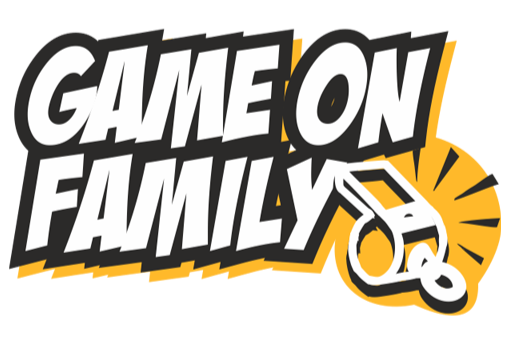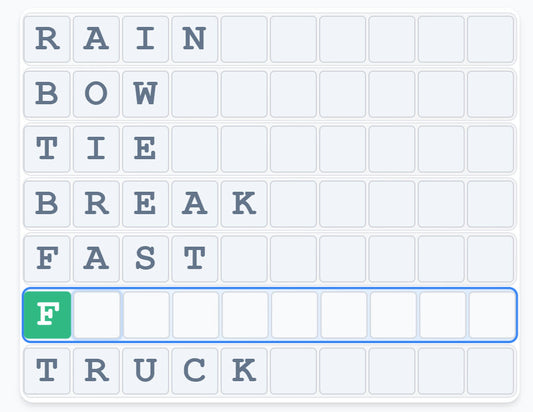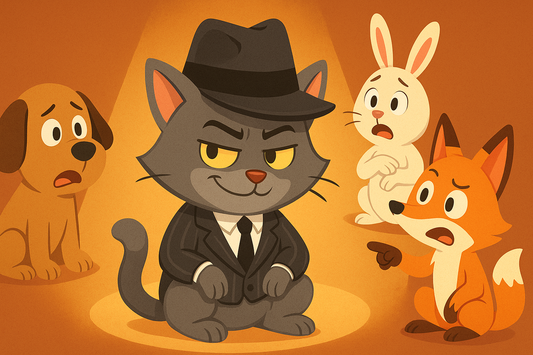
How to Play Uno: Rules, Variations & Family Fun Tips
Share
Uno is one of the world’s most popular family card games. Players race to get rid of all their cards by matching numbers or colors, using special action cards, and shouting “UNO!” when down to their last card.
It’s easy to learn, fast to play, and works for kids and adults alike. That mix of simplicity and strategy has made Uno a classic at kitchen tables, parties, and family nights for decades.
Objective
Be the first player to play all of your cards. Win rounds to earn points from your opponents’ leftover cards. The first to 500 points (or another agreed total) wins the game.
What You Need
- An Uno deck (108 cards)
- 2–10 players
- Paper and pencil if you’re keeping score
How to Play Uno in 8 Steps
Step 1: Grab 2–10 friends and a deck of Uno cards
Uno can technically be played with anywhere from 2 to 10 players, but the sweet spot is 3–6 players. With fewer than 3, the game can feel repetitive. With more than 6, the wait between turns can drag.
Step 2: Choose a dealer and decide who goes first
Shuffle the deck thoroughly. Deal 7 cards to each player, one at a time. Place the rest of the deck face down in the middle to create the draw pile. Flip the top card of the draw pile face up to begin the discard pile.
- Official Rule: The dealer is chosen randomly, and the player to the dealer’s left goes first. Play proceeds clockwise unless a Reverse card changes direction.
Step 3: On your turn, play a matching card (or draw if you can’t)
Play a card from your hand that matches the top card of the discard pile by color, number, or symbol.
- If you play a regular card, play continues in the same direction.
- If you play an action card, the next player must follow its effect:
- Skip – the next player loses their turn.
- Reverse – the order of play changes direction.
- Draw 2 – the next player draws two cards and misses their turn.
Exception to the color, number, or symbol rule:
- Wild – Can be played at any time, even if it doesn’t match. Choose the new color for play.
- Wild Draw 4 – Can be played if you have no matching color. Choose the new color and force the next player to draw four cards and miss their turn.
If you cannot play a card, draw one from the draw pile. If it’s playable, you may lay it down immediately; if not, keep it and your turn ends.
Step 4: Continue play around the table
Each player takes turns in order, following the direction of play (clockwise unless reversed). If the draw pile runs out, shuffle the discard pile (except the top card) to form a new draw pile.
Step 5: Call “UNO!” when down to one card
When you play your second-to-last card, you must call out “UNO” before the next player begins their turn.
- If you forget and another player catches you, you must draw 2 penalty cards.
- If no one catches you before play moves on, you’re safe.
- If another player falsely accuses you of forgetting, they draw 2 cards.
(In my family, this is one of the best moments of the game. The glee of catching someone who forgot to call “UNO!” is almost better than winning the round. It always leads to laughter — and sometimes even playful revenge in the next round!)
Step 6: End the round
A round ends as soon as one player plays their last card. That player is the round winner.
Step 7: Count the points
Each opponent adds up the cards left in their hand:
- Number cards = face value
- Draw 2, Skip, Reverse = 20 points each
- Wild and Wild Draw 4 = 50 points each
The round winner earns the total of these points.
Step 8: Keep playing until someone wins the game
Start the next round with the same rules. Continue playing rounds until a player reaches 500 points (or another agreed target). That player is the Uno champion!
Rules Summary
- Match cards by color, number, or symbol.
- Wild cards can be played at any time; Wild Draw 4 requires no other matching colors.
- Draw one card if you cannot play.
- Call “UNO” when down to one card — or draw 2 penalty cards.
- Round ends when one player plays all cards.
- Score leftover cards and continue until a player reaches 500 points.
Why Uno is Good for Families
Uno is rare among family games — it’s genuinely fun for both kids and adults. Kids love the bright colors, action cards, and the excitement of shouting “UNO.” Parents like me appreciate that it’s simple to teach but has enough strategy to stay interesting.
Some of the strategy elements include:
- Choosing when to hold or play certain cards
- Position play — deciding who to punish with a Draw card
- Observation skills — remembering which colors opponents can’t play
- Quick reflexes — calling “UNO” first or catching someone who forgot
And honestly, some of the biggest laughs in our house come when everyone gangs up on the person in the lead. There’s a certain family joy in hitting them with a Draw 2, followed by a Reverse, and maybe even skipping them just for good measure. Uno is as much about playful rivalry as it is about strategy.
Skills Learned
- Strategic thinking – saving Wilds, timing attacks, hand management
- Memory – recalling what cards others can or can’t play
- Observation – watching opponents’ moves and reactions
- Attention to rules – remembering to call “UNO” or catch mistakes
- Sportsmanship – celebrating wins, handling losses, and laughing through surprises
Strategy
Want to win more often at Uno? Try these tips:
- Hold onto Wilds and Draw 4s until you truly need them — they’re powerful swing cards.
- Pay attention to colors being played (or skipped) to guess which colors opponents are weak in.
- Save action cards for the player to your left (they’re the first opponent affected after your turn).
- Gang up on the leader — it’s often smart to target the player with the fewest cards.
- Get rid of high-value cards early (like Wilds and action cards) if you’re at risk of being stuck when someone else goes out.
- Don’t forget defense — sometimes it’s smarter to play a card that changes the color rather than saving it, especially if it prevents an opponent from going out.
Variations of Uno
Uno has many ways to play. Some families adjust the rules for speed or simplicity, while Mattel has released dozens of official spin-offs and themed decks.
Common House Rules
- Round-Wins Scoring – Instead of playing to 500 points, the winner of each round simply scores 1 point.
- Stacking – Players allow Draw 2s and/or Draw 4s to “stack.” For example, if one player plays a Draw 2, the next player can add their own Draw 2 on top of it. The following player must then draw 4 cards unless they also add a Draw 2. This can continue until someone can’t stack and is forced to draw the total penalty. (Not part of official rules, but very popular.)
- Draw Until You Can Play – Instead of drawing just one card when you can’t play, you must keep drawing until you find one that matches and can be played. This makes the game slower but can create huge swings of luck.
- No Point System – Play round-by-round with no scores at all.
- Seven-O Rule – A 7 lets you swap hands; a 0 rotates all hands.
- Jump-In Rule – Play identical cards out of turn if you have the exact match.
Other Uno Versions
- Uno Attack (Uno Extreme) – Card-shooting machine instead of drawing.
- Uno Flip – Double-sided cards with “light” and “dark” sides.
- Uno All Wild – Every card is wild.
- Uno Dare – Some draws replaced by dares.
- Themed Uno decks – Disney, Marvel, Harry Potter, Minecraft, and more.
Common Questions (FAQ)
Q: Can you put a +2 on a +2 in Uno?
Not in official rules. With house rules that allow “stacking,” yes — the penalty builds.
Q: Can we put +4 on +2?
Not officially. Some house rules allow mixing stacks, but classic Uno does not.
Q: Can you put a Skip on a Draw 2?
No. In official rules, you must accept the Draw 2 penalty — you cannot block it with a Skip.
Q: What makes a Draw 4 illegal in Uno?
You can only play a Wild Draw 4 if you have no cards that match the current color. If challenged and found to have a playable card, you must draw 4 instead.
Q: Does a Draw 2 skip your turn?
Yes. The next player draws 2 cards and misses their turn.
Q: What happens if you can’t play a card?
In official rules, you draw one card only. If it’s playable, you may lay it down immediately; if not, you keep it and your turn ends.
In some house rules, you must keep drawing until you get a playable card.
Q: What does a blank card mean in Uno?
Blank cards are customizable house rule cards. Players can write their own rules on them (e.g., “Draw 5,” “Swap Hands,” etc.).
Q: What is the 7 rule in Uno?
That comes from the Seven-O variation: a 7 lets you swap hands, and a 0 rotates all hands. It’s not in the standard rules.
Q: In a two-player Uno game, does a Reverse card mean I get to play again?
Yes. In head-to-head Uno, a Reverse acts like a Skip. If you play it, your opponent’s turn is skipped and you play again.






